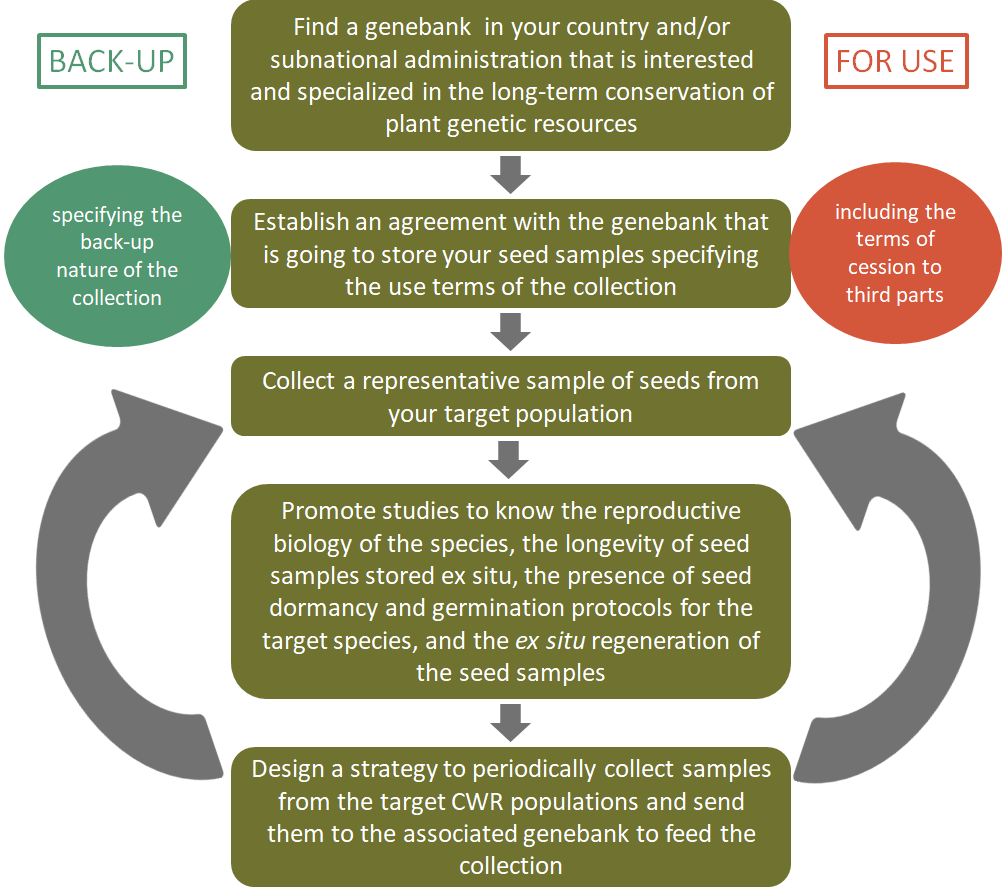A potential linking model
Facilitating breeders and researchers access to a great breath of CWR diversity will definitely benefit CWR conservation as a whole
Background
Without links between CWR in situ conservation and their utilization, there are high chances that the former will remain of low[er] priority for CWR conservation. In improving such links, ex situ conservation plays an essential role.
From a sole conservation perspective, ex situ conservation is a complement to in situ measures with the aim of resettlement? in case of natural disasters eroding CWR in their natural habitats. However, for PGRFA conservation, ex situ conservation is more than just a backup, as it is the way to access conserved germplasm.
Providing access from ex situ collected samples is more efficient in terms of cost and timeliness. As the standard access route, it should further enhance potential user application.
The potential linking model
Maxted and Palmé (2015) suggested a potential model to better integrate in situ and ex situ CWR conservation, and utilization. The model distinguishes four different approaches, each having some advantages and disadvantages.
In this model, they also suggested that gene banks are referred to as Plant Genetic Resources Centres (PGRC) to reflect the significant extension of their role beyond conventional gene banking.
TIP. The most suitable approach for GR managers may depend on the needs of the stakeholder community as a whole. However, to help GR managers choose the best option, click here to see the different steps to address when implementing an ex situ collection of CWR.
What you should know when transferring germplasm…
All germplasm that is transferred away from a wild population should be transferred legally, and in accordance with international and national regulations. Also, resource owners should be fully recognized andtaken into account when sharing benefits arising out of the utilization of their genetic resources.

